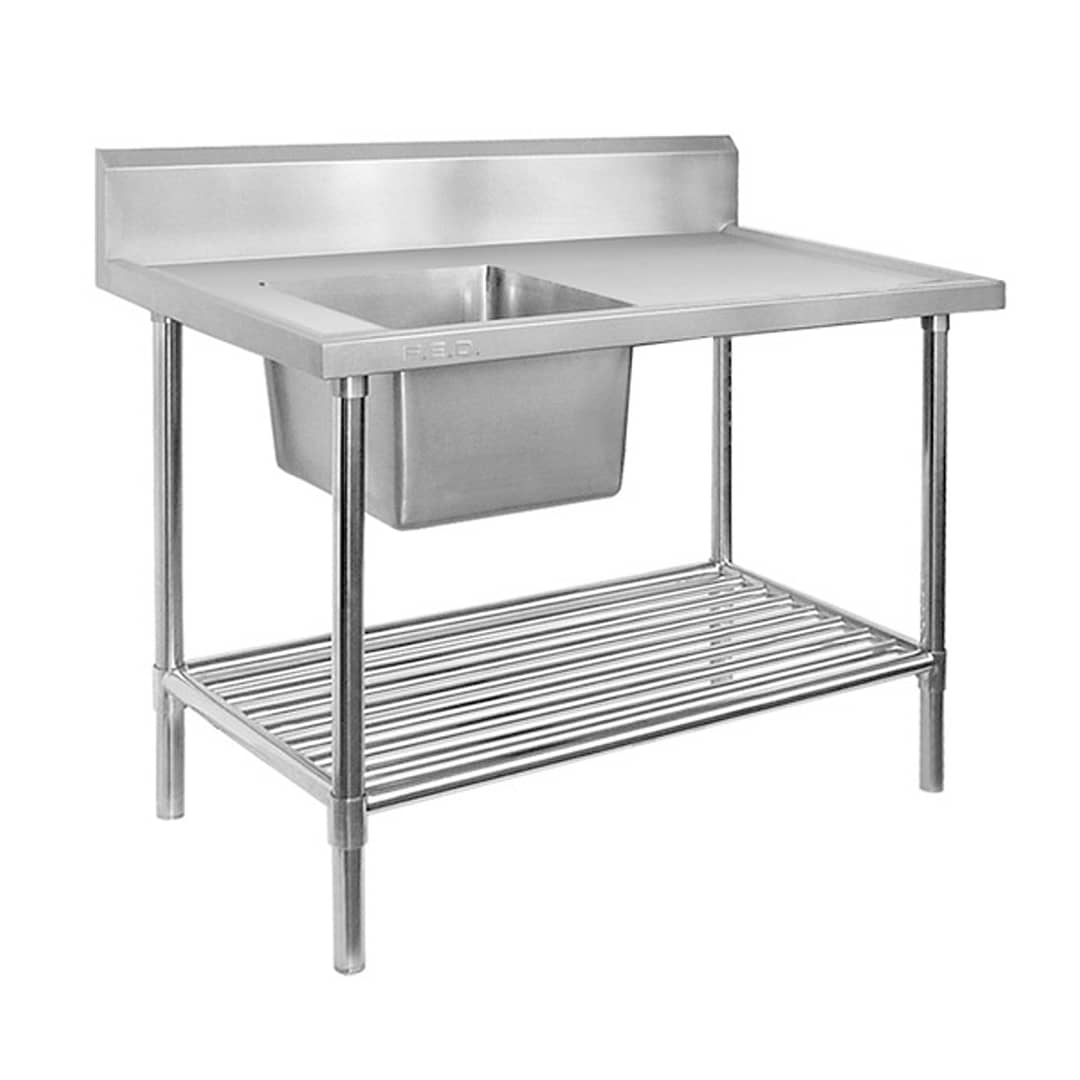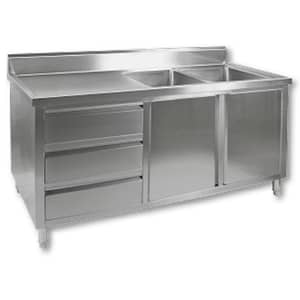Optimal Single Sink Bench for Modular Kitchens
All Stainless Steel Single Left Sink Bench with Pot Undershelf – SSB6-1500L/A
1500 mm wide
Free optional leg brace instead of pot shelf, please specify leg brace on order if required
- Bowl size 400mmW×400D×300H; 90 mm Ø drain hole
- 600 mm deep × 900 mm high
- Specially designed for quick & simple assembly
- Comes with instruction manual & tools
- Supplied flat-packed for ease of transport
- 4 legs per bench – 2100 & 2400 mm wide benches have 6 legs
- 1.2 mm S/S
- 15 mm wet edge
- Centre bowl positioning
- Bowls are fully welded, polished inside & out
- 90 mm Ø drain hole
Splashbacks
- Stainless Steel backed • 150 mm high; 30 mm thick
- Bevelled • fully enclosed
Legs
- 1.2 mm S/S; 42 mm Ø
- Fully adjustable S/S polished disc feet that match the legs perfectly
- Castor kits available (lockable)
Benchtops
- 1.2 mm material; SUS304 (18/8)
- Lined with XPS board, 15 mm thick & S/S panel
- Special S/S ‘U’ channel reinforcements under
- Ripple Surface
– As the bench size increases so does the number of channels
Pot Undershelves
- 1.2mm S/S (18/8)
- Outer frame tubes: 38 Ø 1.2 mm tube
- Inner tubes: 25 Ø 1 mm tube with 40 mm spacing
2 Years Parts only Warranty
Frequently Asked Questions
How do I install the Single Sink Bench in my kitchen?
Installation of the Single Sink Bench requires basic tools. Securely fix the bench to the wall at your desired location, ensuring that the plumbing aligns accurately for optimal functionality. Always check for any existing piping and wiring before drilling into the wall.
Is the Single Sink Bench compatible with all types of plumbing systems?
Yes, the Single Sink Bench is designed to be compatible with most standard plumbing systems. However, for specific needs, such as non-standard pipes, you might need an adapter. Check the specifications or consult a professional plumber for advice.
What routine maintenance does the Single Sink Bench require?
Maintaining the Single Sink Bench involves regular cleaning with a non-abrasive cleaner to avoid scratching the stainless steel surface. Additionally, periodically check the under-sink plumbing to ensure there are no leaks or blockages.

















